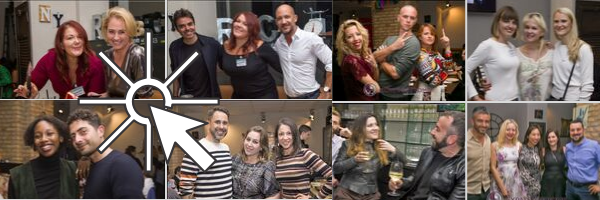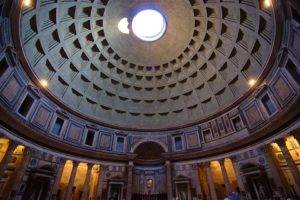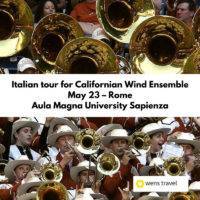 The University of California, Berkeley Wind Ensemble will be touring through Croatia and Italy from 15 to 25 may, providing concerts in Zagreb, Serra de’ Cont, Jesi, Lucca and Rome.
The University of California, Berkeley Wind Ensemble will be touring through Croatia and Italy from 15 to 25 may, providing concerts in Zagreb, Serra de’ Cont, Jesi, Lucca and Rome.
The U.C. Berkeley Wind Ensemble derives from the Department of Music at U.C. Berkeley, which has been ranked among the top music departments in the United States for several decades.
The ensemble, directed by Dr. Robert Calonico, is comprised of 50 students, age 18-23. The repertoire of the Wind Ensemble includes works from Holst, Lauridsen, Bernstein, Della Cese, Grainger, Gorb, Aquilanti and more.
Tour programme 2018
May 16 – Zaprešić, Zagreb – Zapresic City Hall
May 18 – Serra de’ Conti- Chiostro di San Francesco
May 19 – Jesi – Teatro Pergolesi
May 21 – Lucca – Auditorium San Romano
May 23 – Rome – Aula Magna University Sapienza
This international tour will end with a big concert at the Aula Magna of the Sapienza University of Rome, on May 23. What makes this concert even more special is that the MuSa Orchestra, the university orchestra, will open this concert with a performance of the 1st movement of Schubert’s Unfinished Symphony in B minor.
Start concert 18.30h – Wednesday May 23
Aula Magna – Rectorate building
P.le Aldo Moro 5, Roma
Sapienza University of Rome
Link to event here

Visitors can now combine a tour of the Vatican with a wander around the pope’s summer palace – traveling by the Pontiff’s railway.
Things don’t come more Da Vinci Code than a ride on the Pope’s railway – the centrepiece of a new tour launched by the Vatican Museums this month. The train departs the Vatican City’s private railway station – a marble building in the shadow of St Peter’s basilica – on a stretch of track that originates in a tunnel dug into the hillside beneath the Vatican Gardens. It travels along the 300-metre Vatican railway line – the shortest in the world – into Rome, then rumbles on to the Pope’s sumptuous Castel Gandolfo summer palace in the Alban hills south of the city.
[…] Tourism in the towns around the palace suffered when Pope Francis decided not to spend his summer there, and this decision to open it to the public has been interpreted as a helping hand […]
Source: The guardian
Travelling to Rome on a budget?
Never fear – sightseeing in Italy’s magnificent capital city doesn’t have to cost the earth. Although many museums and monuments charge hefty admission fees, a surprising number of the famous sights are actually completely free. The doors of the city’s art-laden churches are flung open to all, ancient architectural wonders await around many a corner and it costs nothing to wander the historic streets, piazzas and parks. Check out our run-down of the best things to do in Rome without spending a thing:
1. Gaze heavenwards at the Pantheon, it’s an exhilarating experience to enter this iconic Roman building and look up at the largest unreinforced concrete dome ever built.
2. Pay homage at St Peter’s Basilica, the Vatican’s showcase basilica is free, though you’ll probably have to queue to get in. Once inside, look out for Michelangelo’s Pietà statue and Bernini’s baldachin (altar canopy).
3. Hang out on Piazza Navona, and enjoy the daily circus of street performers, artists and tourists acted out against a backdrop of baroque palazzi and ornate fountains.
4. People watch on the Spanish Steps, these grand stairs have long been a popular hangout – in the 1800s local beauties would parade up and down hoping to be picked as artists’ models.
5. Tell a lie at the Bocca della Verità, just keep your hands well out of the way. Myth holds that the mouth of the huge ancient face will slam shut on the fingers of anyone who fibs.
6. Throw a coin into the Trevi Fountain, according to legend, this will ensure your return to Rome. You and thousands of other people – on an average day about €3000 is chucked over people’s shoulders into the water.
7. Explore Villa Borghese, Rome’s most famous park is an oasis of shaded walkways, verdant corners and excellent museums.
8. Survey the city from Il Vittoriano, few views can top those from this massive marble monolith. You have to pay to take the lift to the top (€7) but there are plenty of free viewing spots.
9. Explore the Jewish Ghetto, this atmospheric area is studded with artisans’ studios, vintage clothes shops, kosher bakeries and popular trattorias.
10. Walk the Via Appia Antica, antiquity’s most famous road sets the perfect scene for a leisurely amble with its pine trees, Roman ruins, and eerie catacombs.
11. Lap up the atmosphere in Trastevere, this vibrant district buzzes well into the night as locals and tourists hang out on its picturesque lanes and piazzas.
12. Go on a free tour, New Rome Free Tour (newromefreetour.com) runs a daily walking tour of the historic centre.
13. Take a timeout at the Cimitero Acattolico, The last resting place of Keats and Shelley, Rome’s non-Catholic Cemetery is a serene spot to recharge your batteries.
14. Learn about Rome’s war at the Museo Storico della Liberazione, Rome’s Nazi occupation is recounted at this chilling museum housed in what was once the city’s SS headquarters.
15. Marvel at the mosaics in the Chiesa di Santa Prassede, the sparkling Byzantine compositions in this easy-to-miss church are among Rome’s most impressive.
16. Admire modern architecture in EUR, a highlight of the southern district is the Palazzo della Civiltà del Lavoro, a masterpiece of Italian rationalism known as the Square Colosseum.
17. Experience religious ecstasy at the Chiesa di Santa Maria della Vittoria, this roadside church is the unlikely setting for one of Italian baroque’s great masterpieces, Bernini’s Ecstasy of St Teresa.
18. Find architectural perfection on the Gianicolo hill, Bramante’s Tempietto (little temple) is considered the first great building of the High Renaissance.
19. Search out the Arco degli Acetari, discover the picture-perfect medieval courtyard hiding behind the dark Vinegar-Makers’ Arch (Via del Pellegrino 19).
20. Meet Moses at the Chiesa di San Pietro in Vincoli, Michelangelo’s muscular Moses is the star turn at this 5th-century church. Also here are the chains that St Peter supposedly wore in captivity.
21. Peek through the keyhole of the Priorato dei Cavalieri di Malta, and you’ll see St Peter’s dome perfectly framed at the end of a hedge-lined avenue.
22. Partake in the passeggiata, Head to Via del Corso and join the locals on their early-evening passeggiata (stroll).
23. Catch a Caravaggio at the Chiesa di San Luigi dei Francesi, better still, catch three. This baroque church is home to the St Matthew cycle, a trio of the artist’s earliest religious paintings.
24. Get into the swing on Campo de’ Fiori, by day, poke around the much-loved market; at night, grab a drink and see in the small hours with hundreds of like-minded revellers.
25. Seek light relief in the Quartiere Coppedè, with its turreted villas, fairytale towers, gargoyles and arches, this Art Nouveau neighborhood stands in contrast to Rome’s more serious sights.
26. Watch the world go by on Piazza del Popolo, there’s always something going on on this grand neoclassical square. Nearby, the art-rich Chiesa di Santa del Popolo is well worth a look.
27. Do a double take at the Teatro di Marcello, a dead ringer for the Colosseum, this ancient stadium looms over the Area Archeologica del Teatro di Marcello e del Portico d’Ottavia.
28. Investigate a crime scene at the Largo di Torre Argentina, modern investigators have identified the spot where Julius Caesar was murdered. It was in the Area Sacra on Largo di Torre Argentina.
29. Take in a concert during Estate Romana, Rome’s big summer event stages everything from concerts and dance performances to book fairs and late-night museum openings. Some are free.
30. Check out Piazza del Campidoglio, on the Capitoline Hill, Michelangelo’s exquisitely designed piazza is one of Rome’s most beautiful public spaces.
31. Look up at Trajan’s Column, this ancient landmark towers over the Imperial Forums. If you can make them out, the reliefs depict Trajan’s military campaigns.
32. Enjoy local colour in Garbatella, this sparky neighborhood presents a colourful front with its community gardens, faux baroque palazzi and red housing blocks.
33. Go jogging in the Circo Massimo, where once crowds cheered chariot racers in Rome’s largest arena, now locals come to stretch their legs.
Attractions that are free at specific times:
34. Colosseum, Palatino, and Roman Forum; first Sunday of the month.
35. Vatican Museums; last Sunday of the month.
36. All state museums; first Sunday of the month.
37. Pope’s weekly audience; every Wednesday morning.
38. Porta Portese market; every Sunday morning.
39. Palazzo di Montecitorio; first Sunday of the month.
40. May Day Concert; May 1
Rome is one of the most popular holiday destinations in the world, receiving between seven and ten million tourists a year! It’s easy to see why: it is a magnificent city, rich in history, culture, and charm. With thousands of people visiting the Eternal City every day, it is unsurprising that tourist traps and scams have popped up left right and centre. In this post, I would like to advise you how to avoid the most common ones. I should preface this post by saying that Rome is not a dangerous city. Even if you do experience crime, it is much more likely to be petty crime rather than violent. I lived there for almost two years and never had any moments when I felt unsafe.
Good common sense is necessary whenever travelling. For example:
- Making photocopies of your passport, visa and other important documents
- Knowing the emergency telephone number (112 in Italy)
- Being aware of your belongings and general surroundings at all times.
- Having an offline map downloaded onto your phone so you can navigate your way without data or wifi. I use Googlemaps and Maps.me.
- Knowing how late buses & trains run and having enough cash on you for an emergency taxi ride
- Not leaving your drink unguarded (and making sure you don’t go over your limits)
- Listening to your gut – if a person or situation makes you feel uncomfortable or afraid, get away as quickly as possible.
The citizens of Rome are kind-hearted, gregarious people who are generally welcoming and friendly to tourists. Unfortunately there are some bad apples who will try to extort (or steal) money from you. Follow my top tips and don’t give them the satisfaction!
Pickpockets
Let’s start with the worst offenders. Being robbed can seriously spoil your trip and dealing with insurance claims and police reports can be stressful, time-consuming processes. In Rome, many pickpockets work in groups using the distraction technique. Locals can recognise the gaggle of teenage, female pickpocketers by sight now! They mostly operate around Termini (the central train station which connects the A and B metro lines) along with stops along the A line at the major tourist attractions. The pickpocketing gangs distract you by pushing into you during the surge of people entering and exiting at different stops. While you focus on regaining your balance or finding something to hold onto, one of them slips their hand into your pockets. They immediately get off the train and blend into the crowd. However, solo pickpocketers also operate on the train (and buses and trams) so you should be aware of your belongings and surroundings whenever using public transport.
To protect against pickpocketing:
- Don’t keep your wallet or phone in the back pocket of your jeans.
- Keep your bag in front of you, with the opening close to your body. I usually stand with one hand over the opening clasp.
- If you have a backpack, take it off and rest it on your lap (if seated) or hold it in your arms (if facing).
- Leave your passport at your accommodation in a hotel room safe (or hostel locker) and keep a photocopy in your bag.
- Buy a spare wallet, money belt or anti-theft bag.
- Only carry small amounts of cash around with you – look into a bank account which lets you visit ATM/cash machines without incurring charges, so you don’t have to carry all your spending money around with you. I use N26, who offer free withdrawals around Europe, and can provide referral codes if you would like to sign up!
- Put your money and cards in different pockets and wallets, not in just one place.
Street distractions
Here are some of the typical street distractions that you might encounter in Rome. The purpose is to convince you to part with your hard-earned cash… or distract & snatch.
- A stranger approaching you for help with a survey (or to get your signature). While you are distracted, one of their accomplices snatches your valuables.
- Asking for directions and blocking your vision with a map, so you can’t see a hand sneaking into your bag or pocket.
- A street game / exhibition (again, taking advantage of your distracted state). In Rome, there are lots of street musicians, artists and performers, most of who are legitimate but it is good to be careful.
Street sellers
It is a universal truth that when in Rome, street vendors will try persistently to sell you things. Bottles of ice cold water, selfie sticks, scarves, trinkets and souvenirs to name a few. Generally you can dismiss them with a “No, grazie” or just ignore them. However, some vendors can be really pushy and determined. You will often see vendors trying to sell red roses, usually to couples strolling hand in hand. If you are offered one, don’t accept it unless you are willing to pay for it. Even holding it for a brief moment will result in the vendor badgering you for payment (usually a few euros).
An alternative to the red roses is ‘the friendship bracelet’ or ‘friendship ring’ scam. The vendor might offer it as a gift, but once accepted, they immediately put it onto your hand or wrist. Once you’ve worn it, even for a split second, they will try to guilt-trip you into giving them money. I made the rookie mistake of engaging a street vendor in conversation and before I knew it, I had a threaded bracelet around my wrist. After much pleading from him, and rigid refusal from me, he angrily cut the bracelet off with scissors and stormed away. He may have put a hex on me too!
Restaurants
As a general rule, if a margherita pizza costs more than €7-8 euros, it is probably a tourist trap. Keep that in mind, along with these other words of wisdom to ensure that you don’t get ripped off whilst dining in Rome.
- If your dish is much larger than expected, or an extra dish arrives at your table that you didn’t order, question it before tucking in. It might be a mistake or even a present from the restaurant staff (listen out for the magic word gratis!).However, it could be a sneaky dish that you will be charged for. Many restaurants serve limoncello at the end of dinner on the house… but a side portion of fresh oysters probably isn’t going to be complimentary!
- Avoid menus that do not include prices
- Ask for an English and Italian menu so you can check the prices are the same
- Eat where the locals eat; check out the other diners and see if there are any Italians. If everyone looks and sounds like a tourist, it probably won’t be an amazing, authentic dining experience.
In Italy, it is illegal not to be given an itemised receipt. So if you are suspicious about the bill, ask for an itemised receipt and don’t accept a receipt that only shows the total.
There are some additional charges which might seem like scams, but actually aren’t. A cover charge will probably be added to your restaurant bill; pane e coperto (which translates as ‘bread and tableware’). This is normal. If you don’t want the bread, wave it away when it is brought over, or it will be added automatically. You may be surprised by water bottles being added to your bill when you thought they were complimentary. In Rome, it’s uncommon to ask for or receive tap water so you should expect to pay for water.
A little note about café culture – it is customary to quickly drink your coffee standing at the bar, rather than sip it slowly and leisurely at a table. If you want to sit down, your order will be more expensive. Cafés generally have two prices for each item – the al banco standing price and the al tavolo table price. Sometimes the difference can be quite ridiculous – like coffees costing two or three times more if consumed al tavolo. This is especially common in cafés surrounding the piazzas or near the main tourist attractions. Always check the menu before you order and don’t feel pressurised into sitting down if you just want a quick caffeine boost.
Train station ‘helpers’
Nothing screams ‘tourist’ like someone wandering around a train station with a confused look on their face, or spending five minutes pressing buttons on a ticket machine. I have witnessed ‘helpers’ prey on tourists many times. These people don’t work at the train station, they are just opportunists. Be very aware that if someone offers to show you how to buy your ticket, they might not be doing it out of the goodness of their heart. Single journey tickets cost €1.50 in Rome, and it is very common for a friendly stranger to try to persuade you to hand over some of your change. I have seen tourists paying willing, grateful for the assistance, but I have also seen people hand over the cash, looking confused and uncertain, wondering if this is part of the Italian tipping culture. It’s not.
Hopefully these ‘helpers’ will just badger you for some small coins but it could be worse. Someone could steal your wallet or demand a larger tip after helping to carry your bags. Keep hold of your belongings, use a polite but firm ‘No, grazie!’ and ask official train station staff for assistance.
Taxis
Taxi drivers are notorious for overcharging unsuspecting tourists. I’ve heard of visitors paying €250 to travel from Fiumicino airport to the city centre. A staggering rip-off considering all official city taxis have fixed fares within the city limits. A single taxi journey from Fiumicino airport costs €48 and €30 from Ciampino airport. The city centre is classified as anywhere within the Aurelian walls. This map shows (in orange) which areas are included in this fixed fare scheme.
Use the official white taxis, rather than unmarked taxis whose drivers can charge whatever they like. If you do use a private taxi firm, ask how much it will roughly cost before getting in. You shouldn’t be charged extra per bag or passenger.
Make sure you have small change as well, so the driver cannot claim he doesn’t have any small notes and coins, and pockets your change.
Find one at a taxi rank or call a taxi firm. If you decide to book over the phone, be aware that the meter starts running once the booking is confirmed, not once you get inside the vehicle. At the time of writing, Uber Black is available in Rome and Scooterino is a popular alternative to Uber (the same premise except you whizz around the city on the back of a motorbike)
Other scams and tourist traps
Count your change before leaving the shop/till area. This is something I always had to check, especially when shopping in food and street markets. Don’t be embarrassed about slowly & carefully checking that you have received the right amount and question any discrepancies. Once they’ve been caught out, the vendors usually hand over the correct change with a half-hearted (or non-existent) apology.
There are hundreds of tour providers in Rome for the major sites like the Colosseum, Roman Forum and the Vatican. Do your research before arriving and use reputable tour companies with official names/ logos / T-shirt. If in doubt, ask for recommendations from hotel staff.
Near the Colosseum, you will see men dressed in Roman gladiator costumes. They are routinely banned from loitering outside, but often return to persuade tourists to pose for photos. Once the photo has been taken, they will hound you for cash.
Walking around the city, you will see fake luxury products, like watches and handbags, being sold at knock-off prices. These are often sold on the bridges crossing the Tiber river and outside metro stations. It is a crime to be in possession of fake goods in Rome, and if caught by the police, you may be fined several thousand euros.
You may see tourists travelling around Rome in horse-drawn carts. I personally don’t agree with these as the horses are often overworked, underfed and dehydrated from dragging people around under the hot sun. If you want to ride in one of these carts, get a quote before climbing in.
I hope these tips have been helpful to you! Do you know of any other well-known scams that we should be aware of?
Ciao for now
Good reads!
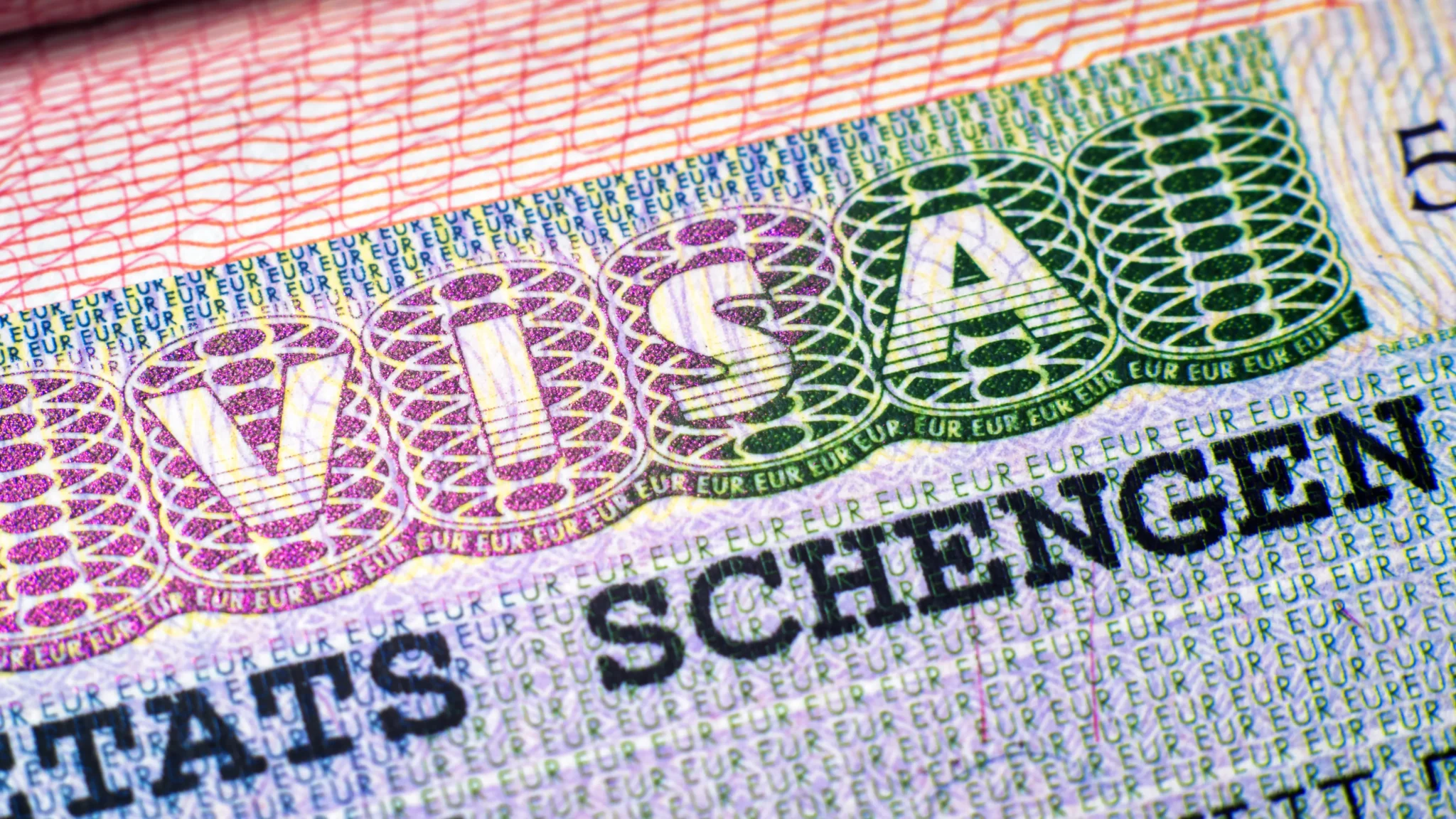
What you need to know about Visas and Permits to stay in Italy
Visas are issued by the Italian Embassy or Consular Sections of a foreign national’s country of residence. Permits to stay are issued in Italy by the Questura (Police Headquarters) having jurisdiction in the province where a foreign national is staying. Foreign nationals are required to apply for residence permits within 8 working days (i.e. excluding […]
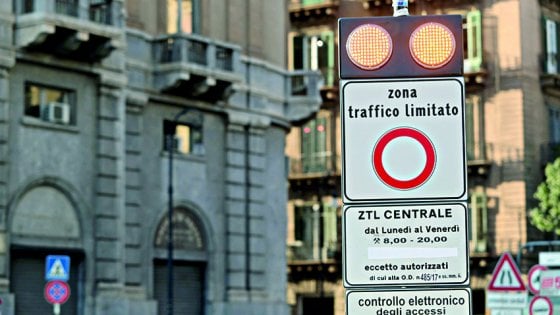
Understanding Rome’s Zona Traffico Limitato (ZTL)
Major cities worldwide are limiting transportation in their city centers as measures to reduce urban smog and air pollution. Rome is no exception to this. Information on the city’s official website and other resources can be unclear so we’ve devised this comprehensive guide to understanding Rome’s ZTL rules and how they apply to you. The […]
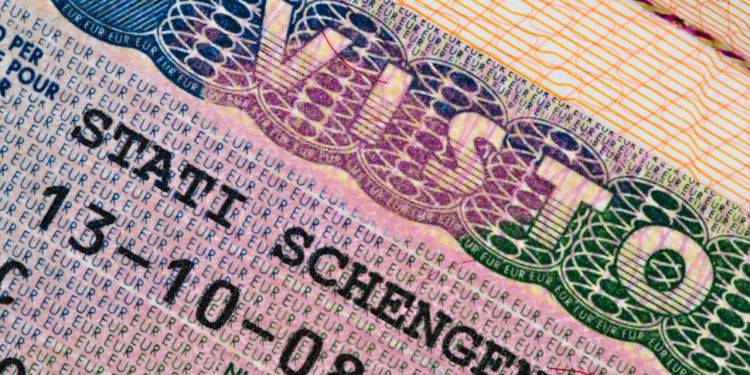
Who is eligible for a long term residency permit in the EU?
The 2003 European Directive on the status of non EU nationals states that a long-term residence permit should be awarded after a person has lived legally in an EU State for an uninterrupted period of five years. This however depends upon the applicant having a stable and regular source of income, health insurance and (when required by the […]
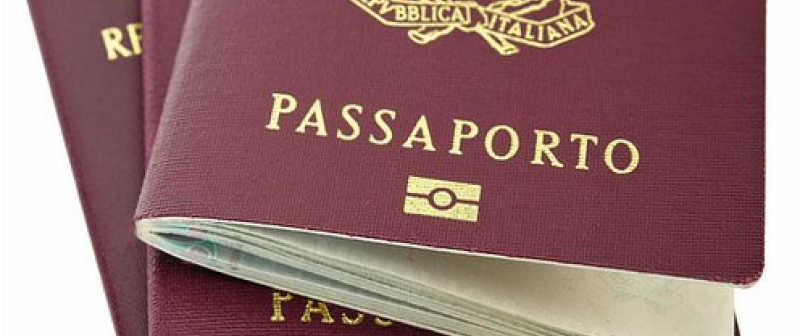
Italian citizenship: ways to acquire it!
ITALIAN CITIZENSHIP CAN BE ACQUIRED IN ONE OF THE FOLLOWING WAYS (Law No. 91/1992): 1) CITIZENSHIP AS A RESULT OF ITALIAN PARENTS/ANCESTORS (“ius sanguinis”) A person acquires Italian citizenship when born the father, or mother are Italian citizens or whose ancestors (there are no limits of generations) are Italian citizens. Hence the principle of ius […]

The 2003 European Directive on the status of non EU nationals states that a long-term residence permit should be awarded after a person has lived legally in an EU State for an uninterrupted period of five years.
This however depends upon the applicant having a stable and regular source of income, health insurance and (when required by the EU State), having complied with integration measures (he must also not constitute a threat to public security or public policy). If the applicant complies with these conditions, he can receive an EU long-term residence permit, renewable, without expiration and the status of EU long-term resident. The owner of a long-term residence permit receives the same treatment and rights as nationals in many areas: for example, access to employment and self-employment activity; social protection and assistance, move to another State of the Schengen area, etc.

